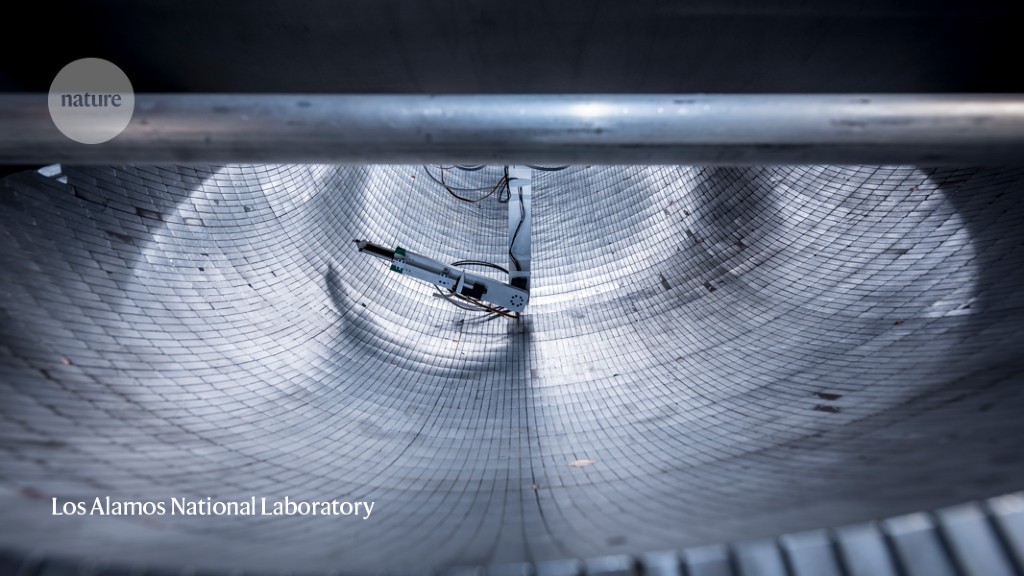
But they do not explain why in an alternative kind of experiment, neutrons last nearly 10 seconds longer.
The result is “very impressive”, says physicist Shannon Hoogerheide, who measures neutron lifetimes using a competing technique at the US National Institute of Standards and Technology (NIST) in Gaithersburg, Maryland.But isolated neutrons, such as those produced by nuclear fission, are unstable and decay into protons.
Exactly how long it takes for a neutron to decay is random, but the average time is about a quarter of an hour.To get a precise value, Daniel Salvat, an experimental nuclear physicist at Indiana University in Bloomington, and his colleagues built an experiment called UCNτ at the Los Alamos National Laboratory in New Mexico.
They slowed neutrons down to ultra-cold temperatures and placed them in a vacuum ‘bottle’, a metal structure shaped like the halfpipe in skateboarding.
Magnetic fields at the bottom of the bottle prevented the neutrons from touching the surface, where they would have been lost.
The team kept neutrons in the bottle for periods of between 20 seconds and nearly half an hour, and detected sparks of light each time a neutron decayed.At the end of each cycle, they collected and counted the remaining neutrons, reloaded the bottle with fresh neutrons and started the process again.
While some researchers use the ‘bottle’ technique to measure the neutron lifetime, others — such as Hoogerheide — use a method that involves watching the particles decay as they move in a beam2.Neutrons in beams seem to live longer on average (see ‘Unresolved differences’).
“Even in the light of that new result, the discrepancy remains almost intact,” says Serebrov, who led a high-precision bottle experiment in 20053 that first pointed to a possible discrepancy.
The method relies on the fact that most planetary bodies eject neutrons when hit by cosmic rays.Many of the neutrons fail to escape a planet’s gravity and eventually rain back down — but by then, some of those have transformed into protons.
Comparing the number of neutrons emitted into space with those that come back can provide an estimate of the neutron’s lifetime4.
“Some fraction of the neutrons will go up, decay and never come back down,” Lawrence says.
He adds that the ideal way to do such an experiment would be with a small, dedicated probe in orbit around Venus, because the planet’s carbon dioxide atmosphere does not absorb neutrons well.